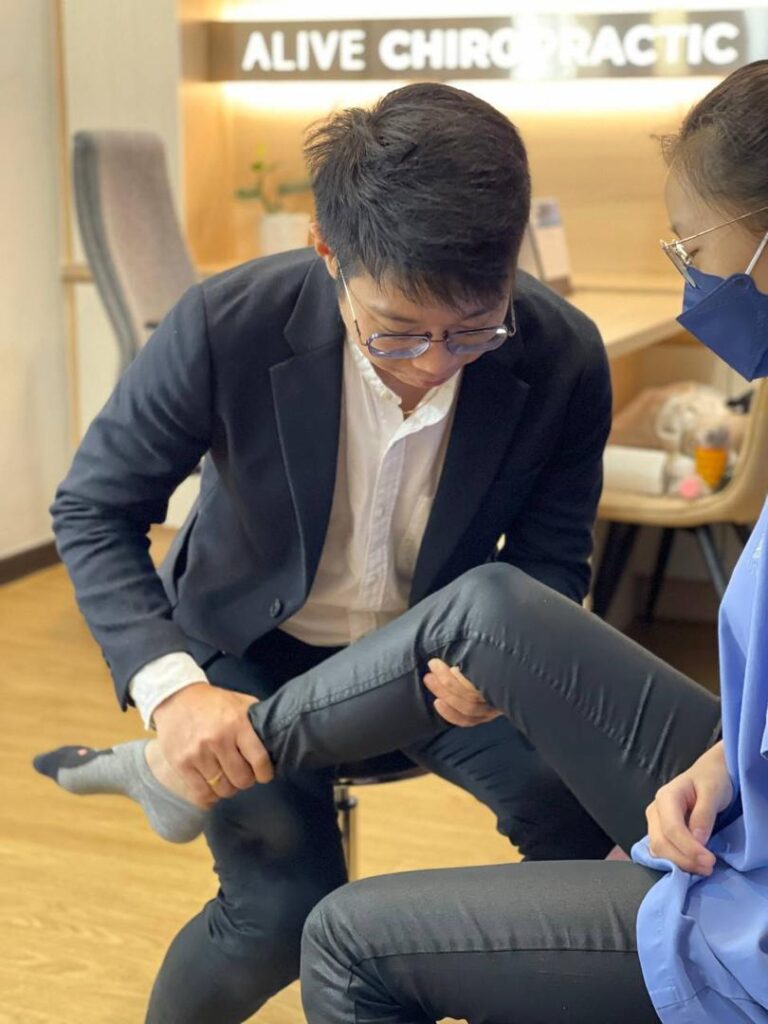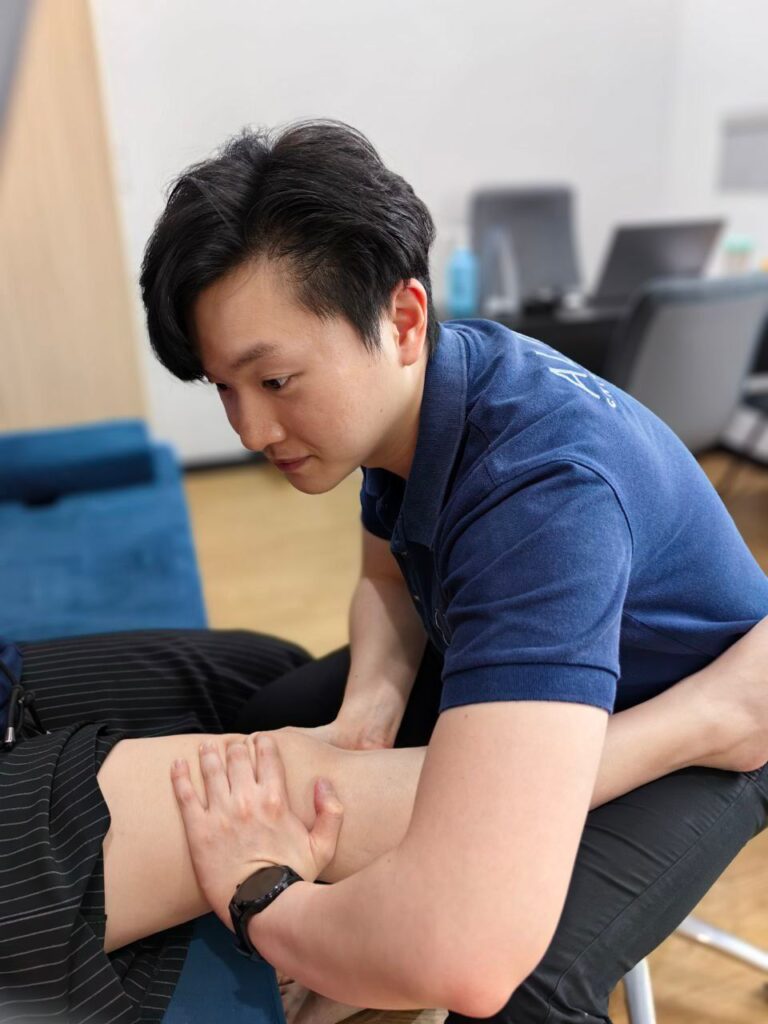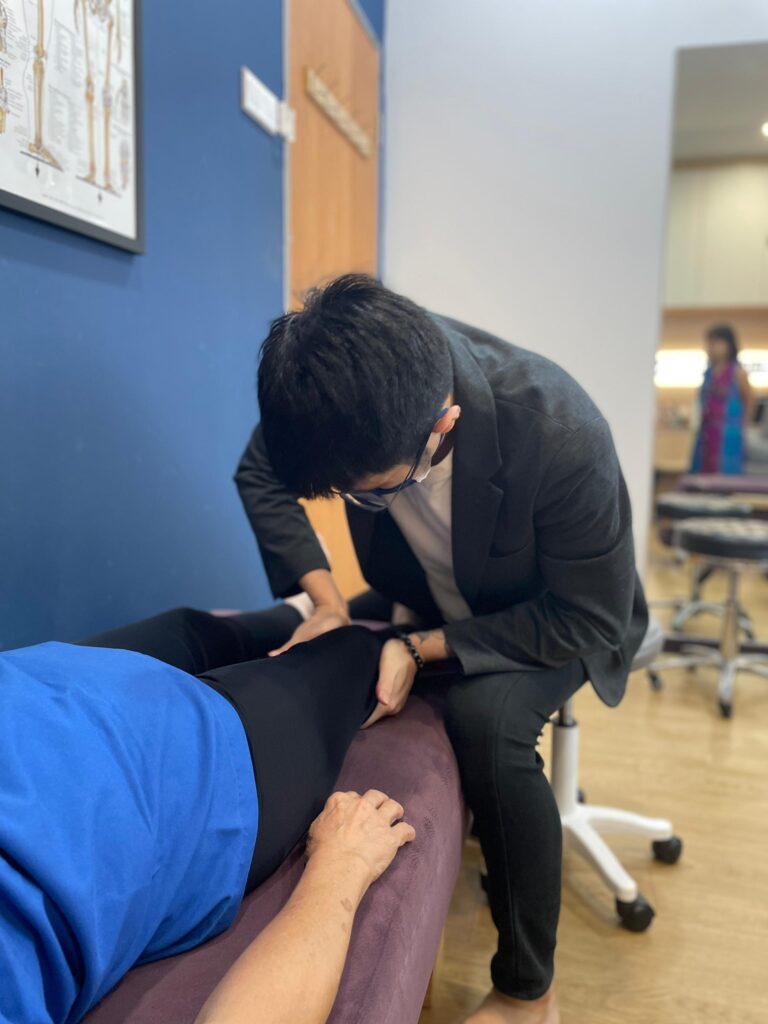Knee Pain Treatment
Home / Knee Pain Treatment
Knee pain is a common complaint that affects people of all ages. Whether it’s due to an acute injury, overuse, or an underlying condition such as arthritis, knee pain can significantly impact your quality of life. However, in some events, the sensation on the knee can be due to sacroiliac joint dysfunction, sciatica and lumbar disc herniation.
Symptoms of Knee Pain
1.Swelling and Stiffness
- Description: Knee appears puffy and feels tight.
- Causes: Inflammation from arthritis, bursitis, or injury.
- Watch For: Persistent swelling or warmth and redness.
2. Weakness or Instability
- Description: Knee feels like it might give way.
- Causes: Ligament injuries, muscle weakness, or nerve damage.
- Watch For: Persistent instability needs medical evaluation.
3. Inability to Fully Straighten the Knee
- Description: Difficulty fully extending the knee.
- Causes: Meniscus tear, injury swelling, or arthritis.
- Watch For: Persistent inability to straighten the knee.
4. Knee Pain During Specific Activities
- Description: Pain during activities like walking or climbing stairs.
- Causes: Patellar tendinitis, runner’s knee, etc.
- Watch For: Pain linked to specific activities.
5. Knee Pain at Rest
- Description: Pain even when resting.
- Causes: Chronic conditions like arthritis or severe injuries.
- Watch For: Persistent rest pain needs medical attention.
6. Numbness or Tingling
- Description: Pins and needles or loss of sensation.
- Causes: Nerve compression or damage.
- Watch For: Persistent numbness or tingling.

Chiropractic’s Approach to Knee Pain Treatment
Chiropractic care is a holistic approach to managing and alleviating knee pain without the use of drugs or surgery. Chiropractors focus on the musculoskeletal system, particularly the spine, and its relationship to the body’s overall function. Here’s how chiropractic care can help you during knee pain treatment:
Assessment and Diagnosis: Chiropractors perform thorough evaluations to understand the root cause of knee pain. This includes physical examinations, gait analysis, and sometimes imaging studies like X-rays.
Gonstead Chiropractic Adjustments: Chiropractic adjustments can help correct misalignments in the spine and joints. Proper alignment can improve knee function and reduce pain by ensuring that the body’s weight is evenly distributed.
Soft Tissue Therapy: Techniques such as trigger point therapy, and myofascial release help reduce muscle tension, improve blood flow, and promote healing in the affected knee area.
Rehabilitation Exercises: Customized exercise programs strengthen the muscles around the knee, improve flexibility, and enhance joint stability. These exercises are crucial for recovery and preventing future injuries.
Lifestyle and Ergonomic Advice: Chiropractors often provide guidance on posture, footwear, diet, and activities to support knee health and overall well-being. This holistic approach ensures long-term benefits and helps maintain a pain-free lifestyle.
Benefits of Chiropractic Care for Knee Pain Treatment
- Non-invasive and drug-free
- Personalized knee pain treatment plans
- Focus on overall health and prevention
- Improved mobility and function
- Enhanced quality of life
If you’re experiencing knee pain, consider consulting a chiropractor to explore safe and effective knee pain treatment options. With a comprehensive approach to care, chiropractors can help you manage pain, restore function, and get back to enjoying your daily activities.
When considering knee pain, many immediately think of issues within the knee itself, such as arthritis or ligament injuries. However, several other hidden causes can contribute to knee pain. For instance, hip problems like bursitis or labral tears can alter gait mechanics, placing undue stress on the knee. Lower back issues, including sciatica or herniated discs, may lead to referred pain in the knee. Additionally, problems with the foot and ankle, such as flat feet or Achilles tendonitis, can change the way you walk and put extra pressure on your knees. Even muscular imbalances or weaknesses in the quadriceps, hamstrings, or glutes can cause the knee joint to compensate improperly, leading to pain over time. Addressing these underlying conditions is crucial for effective knee pain treatment and management and overall joint health.


